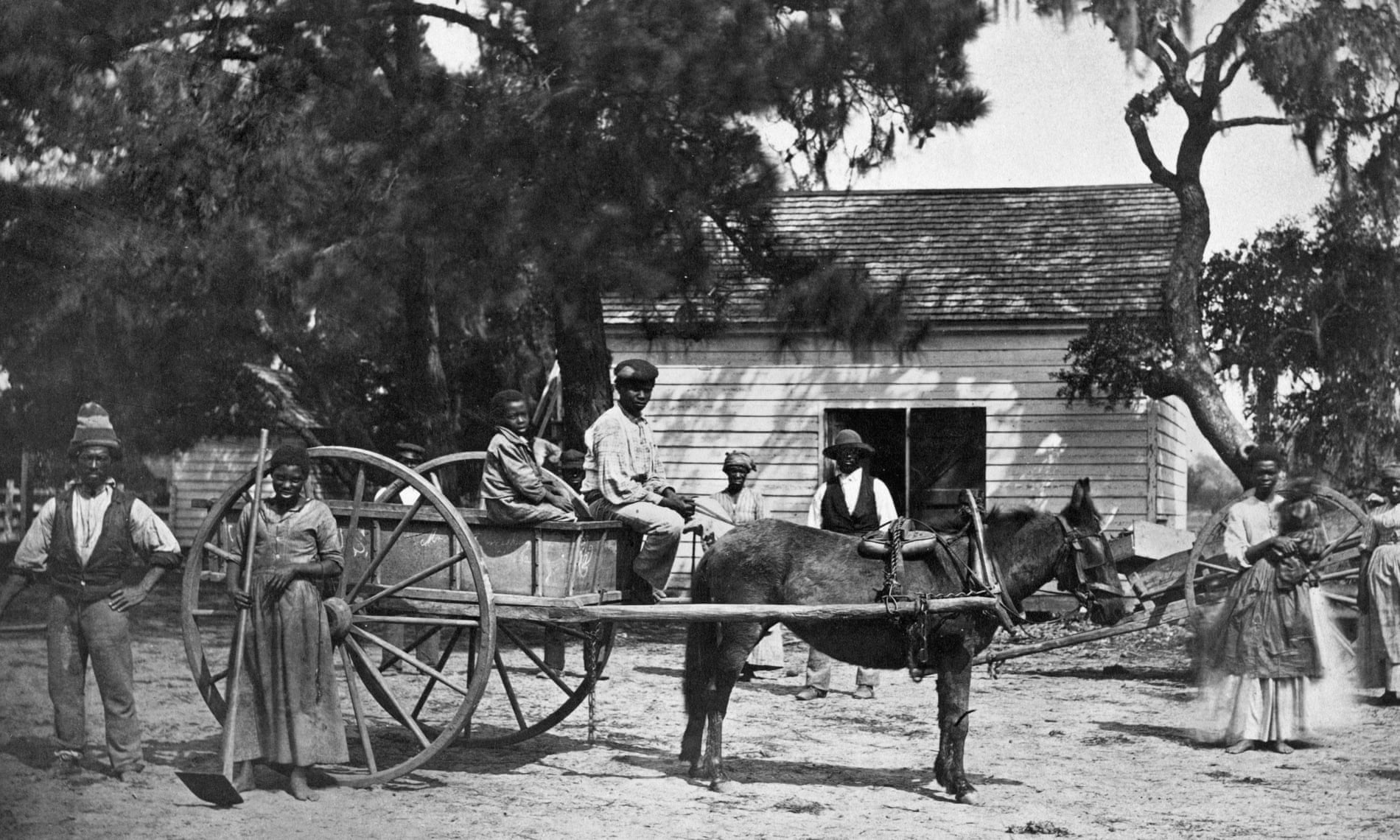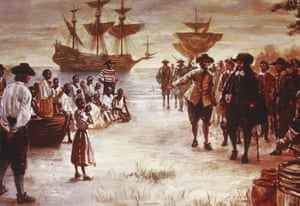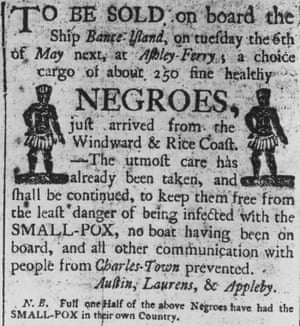by KHUSHBU SHAH & JUWEEK ADOLPHE

A group of African American slaves at the Cassina Point plantation of James Hopkinson on Edisto Island, South Carolina. PHOTO/Marian S Carson Collection/Library of Congress
Many Americans’ introduction to US history is the arrival of 102 passengers on the Mayflower in 1620. But a year earlier, 20 enslaved Africans were brought to the British colonies against their will.
As John Rolfe noted in a letter in 1619, “20 and odd negroes” were brought by a Dutch ship to the nascent British colonies, arriving at what is now Fort Hampton, then Point Comfort, in Virginia. Though enslaved Africans had been part of Portuguese, Spanish, French and British history across the Americas since the 16th century, the captives who landed in Virginia were probably the first slaves to arrive into what would become the United States 150 years later.
Four hundred years on, the captives’ arrival has informed nearly every major moment in American history, even if that history has been framed around anyone but Africans and African Americans.
“Historians, elected political figures [and] community leaders would prefer to sort of imagine the United States as a kind of mythic, Anglo-Saxon Christian place,” says Michael Guasco, an early American history professor at Davidson College.
In 1992, Toni Morrison told the Guardian: “In this country, American means white. Everybody else has to hyphenate.”

An engraving shows the arrival of a Dutch slave ship with a group of African slaves for sale at Jamestown, Virginia, 1619. Photograph: Hulton Archive/Getty Images
1619
After the first captives were forced on to Virginia’s shores by a Dutchman in 1619, the majority of the country remained white and relied mainly on the labor of Native American slaves and white European indentured servants. It was not until the end of the 17th century that the transatlantic slave trade made its impact on the American colonies.
1661
The first anti-miscegenation statute – prohibiting marriage between races – was written into law in Maryland in 1661, shortly after enslaved people were brought to the colonies. By the 1960s, 21 states, most of them in the south, still had those laws in place. Alabama was the last state to repeal the ban on interracial marriage, in 2000.

A Boston advertisement for a cargo of about 250 ‘fine healthy negroes’, recently arrived from Africa on the slave ship Bante Island. Circa 1700. Photograph: MPI/Getty Images
1776
The Declaration of Independence, which embraced in its first lines “that all men are created equal, that they are endowed by their creator with certain unalienable rights”, did not extend that right to slaves, Africans or African Americans, with the final version scrapping a reference to the denunciation of slavery. Thomas Jefferson, a slaveowner himself, penned those lines rejecting slavery; he removed the reference after receiving criticism from a number of delegates who enslaved black people. This could represent “the fabric of the American political economy” ever since, some historians have said.
Slavery flourished initially in the tobacco fields of Virginia, Maryland and North Carolina. In the tobacco-producing areas of those states, slaves constituted more than 50% of the population by 1776. Slavery then spread to the rice plantations further south. In South Carolina, African Americans remained a majority into the 20th century, according to census data. Guardian graphic | Source: Kolchin, Peter. American Slavery, 1619-1877 and IPUMS NHGIS, University of Minnesota, www.nhgis.org
1860
The British-operated slave trade across the Atlantic was one of the biggest businesses of the 18th century. Approximately 600,000 of 10 million African slaves made their way into the American colonies before the slave trade – not slavery – was banned by Congress in 1808. By 1860, though, the US recorded nearly 4 million enslaved black people – 13% of the population – in the country as the American-born population grew. Guardian graphic | Source: 1860 census
Eight of the first 12 US presidents were slave owners. Proponents of slavery supported the efforts of groups like the American Colonization Society, who “sent back” tens of thousands of free black people – most of them American-born – to Liberia in the 19th century to prevent disruption caused by free descendants of slaves.
The Guardian for more
